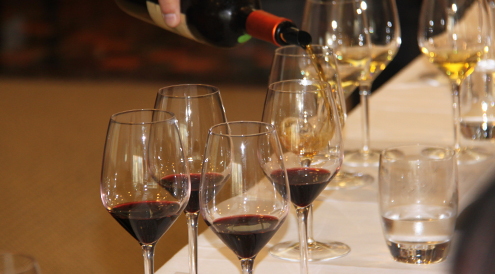
I have been known to linger at wine lists so long that exasperated friends and family now often send me wine list from restaurants we are meant to dine in days before our reservation date. “This is so we are not parched and dying of thirst,” they would tease me and explain. “You can join in our conversation and enjoy the evening instead of having your nose buried in a wine list.” That might explain why I was thrilled to spend weeks pouring over wine lists for Tatler’s Best Restaurants Guide book last year and again this year. I love going through wine lists. As expected, some are dead boring and read like a supermarket shopping list and others can entice you, opening your mind and palate to new regions and flavours. I appreciate that everyone looks at a wine list differently: Some are looking for value, some for interesting wines to try, while others seek that perfect wine to pair with their meal. For the small minority of wine anoraks like myself, we savour good wine lists like one does cookbooks. We flip through each page, salivating at the possibility of tasting the wines on offer, looking for personality and appreciating thoughtful selections organized in a logical way. We know when we come across a great wine list; it is well laid out, easy to browse and filled with variety, depth and choice at all price points. However, critically evaluating wine lists requires a more rigorous approach. Just reading through a book is different from having to comment intelligently on why it has literary merit or not. I found myself putting on my wine critic’s hat and formulated a systematic approach and began to rate and rank wine lists. Like wine, I rank wine lists out of 100 points and use the following criteria like a check list to formulate final ratings: Variety & choice: The wine list must contain sufficient choice at different price points. A good diversity of wines must suit the clientele and style of restaurant with the caveat that a longer list is not always better. The wine list should have good examples of type – by style, region and quality producers. Overall, the wine list must be thoughtfully laid out and well chosen with sufficient wines by the glass or carafe. Price & Value: The wine prices need to be reasonable, especially in Hong Kong where the BYOB culture is so strong and competes with the wines on offer. The typical markups on wine, not just in Hong Kong but around the world, range from two to five times the purchase price of the wine. A reasonable markup for expensive wines at over HK$2,000 per bottle would be two times purchase price and for less expensive wines, less than three times purchase price. Offering value is not just about pricing but also about the selection – for example, great value Loire whites can add value to the wine list by offering crisp, refreshing Sauvignon Blanc based wines at affordable prices. Core Basics: The wine list should have a solid backbone of core wines which form the heart of the list. For a steak restaurant, the heart of the list might be a wide and deep selection of Cabernet Sauvignon based wines from around the world; for a seafood restaurant, it might be a large selection of unoaked, refreshing white wines; for a Japanese restaurant, it could be an unparalleled selection of vintage champagne and white Burgundy. Whether the list is long or concise, the core of the list reveals where the sommelier or buyer has spent the most effort and time. The core selection conveys the list’s main strengths, its distinctiveness and personality. The core listings can be from any quality wine region in the world and it’s important to keep in mind that depth is important. A good list offers depth of vintages as well as depth in alternative size formats – half bottles, magnums, etc. Innovative & unique: Wine lists can be formulaic and uninspiring. Credit must be given to lists that offer interesting wines that are rare or lesser known. Unique presentation and informative listing of wines can aid in enticing people to explore and be less intimidated by a long wine list. Other innovative ways to engage consumers are to offer exciting wine promotions, wine flights and tasting portions. Food & Wine: Not enough restaurants in Hong Kong take into consideration the wine list’s compatibility with the type of cuisine and the dishes on offer. There is a poetic synergy when the wine list actually echoes the flavor combinations on the food menu. Restaurants that make this effort should be acknowledged. Part II will identify the top Hong Kong restaurant wine lists and explain what makes them great.
Reprinted with permission from South China Morning Post









